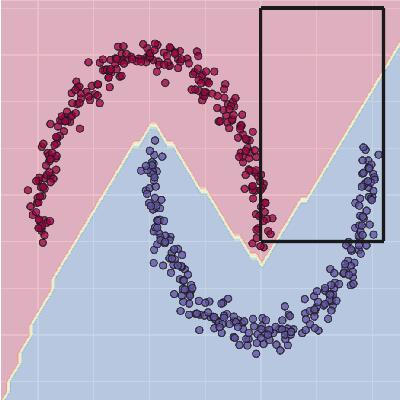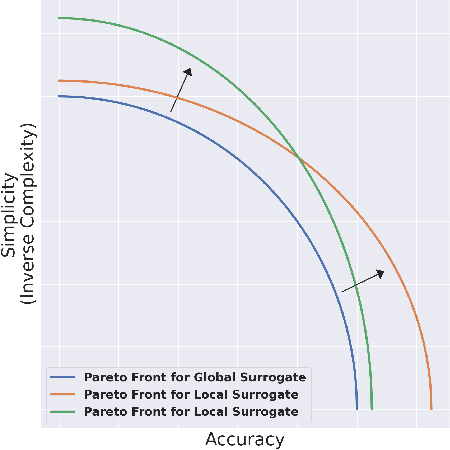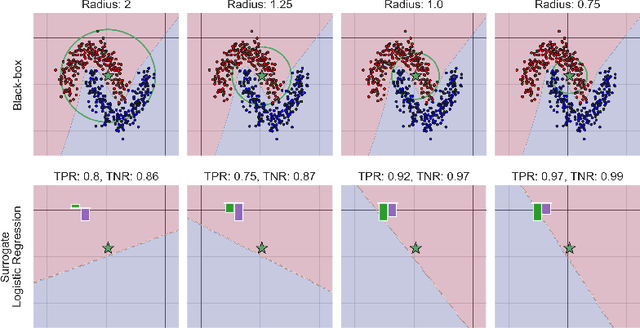Understanding surrogate explanations: the interplay between complexity, fidelity and coverage
Paper and Code
Jul 09, 2021



This paper analyses the fundamental ingredients behind surrogate explanations to provide a better understanding of their inner workings. We start our exposition by considering global surrogates, describing the trade-off between complexity of the surrogate and fidelity to the black-box being modelled. We show that transitioning from global to local - reducing coverage - allows for more favourable conditions on the Pareto frontier of fidelity-complexity of a surrogate. We discuss the interplay between complexity, fidelity and coverage, and consider how different user needs can lead to problem formulations where these are either constraints or penalties. We also present experiments that demonstrate how the local surrogate interpretability procedure can be made interactive and lead to better explanations.
 Add to Chrome
Add to Chrome Add to Firefox
Add to Firefox Add to Edge
Add to Edge